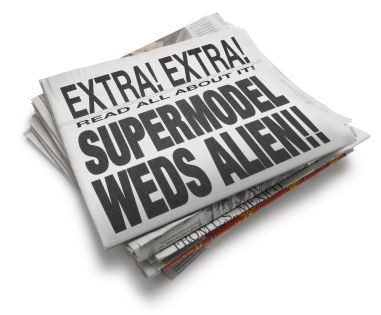 The first thing most readers notice in print or online is a headline.
The first thing most readers notice in print or online is a headline.
On the front cover of magazines these headlines are referred to as cover lines, and on a piece of marketing collateral this could be the tag line or the messaging itself.
Think of your headline as your only chance at a “first impression”. Will the headline make people want to read on? Does it encapsulate what you are trying to communicate?
Various types of headlines exist, and some are more suitable than others for various types of content. Here are some examples to help you write an appropriate headline.
1. Direct: “Car for Sale”
OK – so not very imaginative. Such an approach may seem dull, but consider that no single reader personality prevails; some people prefer the straightforward approach. Many people looking for a car on sale will be happy to see this headline “Car for Sale” as it cuts through all the fluff and speaks directly to the person looking to buy a car.
2. News: “Eagerly anticipated enviro-friendly car launches in April”
A journalistic headline conveys authority and is straightforward without being plain.
3. How to: “How to select the best enviro-friendly car”
The words “how to” have launched a million headlines and for good reason: What do you type into a search engine when you want to learn how to do something? “How to” tells readers that somebody out there wants to help them.
4. Question: “Is your car the right car for your needs?”
A query to readers is an invitation, a promise that they’ll get something out of the experience; all they have to do is pick up the magazine or click on the link and read.
5. Command: “Visit www.enviro-cars-are-us for the best deals”
You don’t have to be a current or former military service member to know that a directive gets one’s attention. Of course, it’s more likely to succeed in a marketing pitch if it aligns with the target audience’s desires. Also referred to as the “call to action” in a marketing campaign.
6. List: “Top 10 things to look for in the latest enviro-friendly cars”
The next-best approach to a how-to headline is a list that involves numbers. You will see this approach used consistently in magazines. People like enumeration; it offers a promise that they will come away from the reading experience with quantifiable results.
7. Testimonial: “I got a great deal on the new enviro-friendly car”
A testimonial is a statement demonstrating the value of the good or service in question. It is a tried, trusted and proven advertising strategy. It provides credibility particularly if backed up with names. People (and companies) are drawn to anecdotal evidence. It helps build trust.
8. Teaser: “The most important purchase you’ll make this year”
Take care with this approach, because you can easily overextend yourself. “My most important purchase of the year will be an enviro-friendly car? Really?” If you can back up the tease with survey results or testimonials then by all means use it. But be careful: One unsubstantiated teaser headline can drive a reader away forever.
Hopefully these point you in the right direction depending on what type of headline you need to write. As with all writing, remember who your audience is and create a headline that speaks directly to them. Remember – if it is a global audience, don’t get too clever by making a play on words. This does not translate well into other languages.
 Send to Kindle
Send to Kindle

